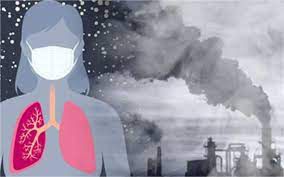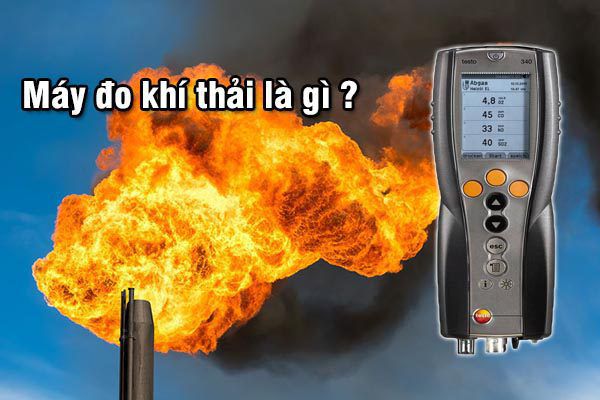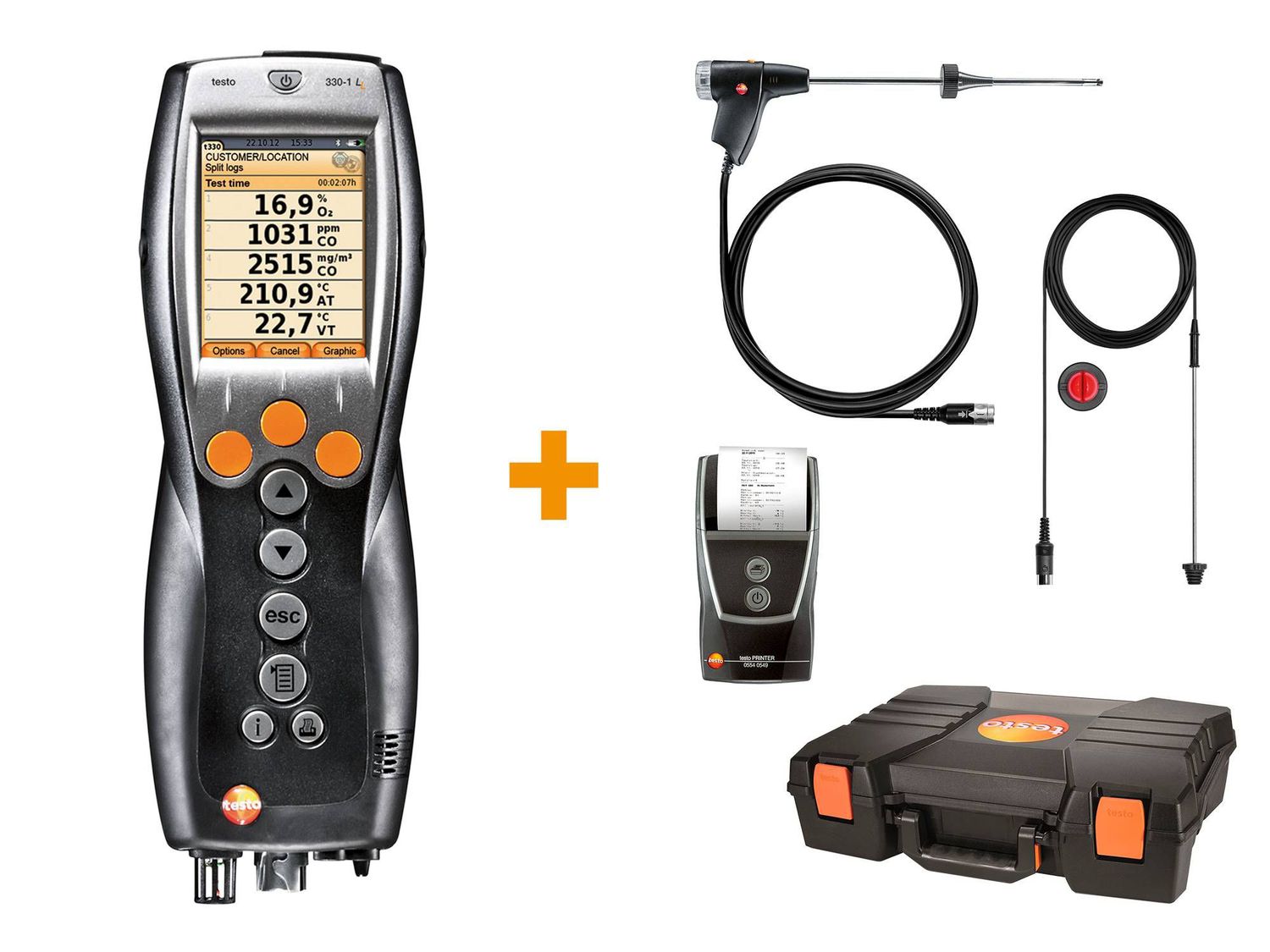What is an exhaust gas meter? Reasons to use exhaust gas meters in industrial environments
Exhaust gas meters play an important role in measuring various pollutants in exhaust gases, helping to monitor and maintain ambient quality. This not only ensures high performance but also helps preserve the living environment in a sustainable way and in harmony with humans and nature.
Contents
Emissions, a notable manifestation of environmental change and a consequence of industrial and human activities, have had a major impact on air quality. Ingredients such as smoke, dust, vapors, and other unwanted compounds all contribute to making the air unpleasant, even leading to reduced visibility. Not only that, the presence of emissions also significantly affects the climate, causes many negative effects on human health and can hurt organisms ranging from animals to food crops. Furthermore, it can also harm the natural environment and construction works.
To a large extent, both humans and natural processes have the potential to cause air pollution, creating unwanted and unforeseen impacts. Emissions, toxic gases produced mainly from production processes and daily activities, are increasingly becoming a social concern.
To deal with this challenge, exhaust gas monitors have emerged as an effective solution to control and optimize fuel usage and air input. EMIN, in this journey of discovery, offers an in-depth understanding of exhaust gas meters. We will learn about the structure of this meter, the types of emissions and toxins, and the methods used to measure the concentration of CO, CO2, H2S, NO, NO2. This not only helps us better understand the impact of emissions but also contributes to maintaining and protecting our living environment.
So what is a gas meter?
Fireplaces and boilers, which provide heat mainly through fuel combustion with the important participation of oxygen, are becoming indispensable pillars for heat generation in a variety of applications. To achieve the ideal balance between fuel and air, create the most efficient combustion process and minimize costs, measuring and analyzing exhaust gas concentrations becomes an important factor.
Flue gas meter - an indispensable device in this process, designed to measure the concentration of various gases and at the same time adjust the burner on the boiler to support efficient combustion. optimal capacity. This not only helps to optimize the balance but also ensures that combustion takes place efficiently, minimizing the amount of pollutants such as nitric oxide (NO), nitrogen dioxide (NO2), sulfur dioxide (SO2 ), and matter particles.
Types of exhaust gases
The composition of exhaust gases represents a significant change in the composition of the air, consisting primarily of smoke, dust, vapors, and other undesirable gases, often accompanied by unpleasant odors. This phenomenon not only limits visibility but also creates negative impacts on the climate, threatens human health and can harm animals and food crops. In addition, emissions also have the potential to damage the natural environment and construction works.
All human activities and natural processes have the potential to cause air pollution, increasing the diversity and toxicity of emissions. In particular, exhaust gases, which are formed during industrial production and daily living, are also toxic substances, and are contributing significantly to the unpredictable changes of the environment around them. ta. This increases the risk of harm to human, animal and plant health and poses a great challenge for protecting and maintaining balance in natural ecosystems.
Classification of exhaust gases provides a diverse view of their types and origins:
Gas form:
- SO2 (Sulphide Dioxide): A gas caused by the combustion of fuel containing large amounts of sulfur.
- NO (Nitrogen oxide): Comes from the combination of air and high temperature during the combustion process.
- H2S (Hydrogen sulfide): Formed from the decomposition of organic sulfur.
- NH3 (Ammonium): Generated from the production and use of fertilizers.
Vapor (liquid):
- Organic solvent vapor: Is a product of the process of using and producing organic chemicals.
- Acid vapor: Appears during the combustion of fuel containing sulfur.
Solid form:
- Particles such as dust and smoke: Usually ranging in size from 0.1 to 100 km, they appear during the production and combustion of fuels.
Origin of emissions
- Talking about the origin of emissions, they come from many different sources, including:
- Industry: Production and processing process.
- Transportation: Burning fuel in moving vehicles.
- Agriculture: Arising from the production and use of fertilizers.
- Living: Daily human activities, including energy use and waste production.
All of these forms contribute to the diversity and complexity of the air pollution problem and require special attention to control and minimize negative impacts on the environment and public health.
How do emissions affect our health?
Emissions are not only an environmental problem, but also carry significant impacts on human health and the surrounding biosphere. Many studies have confirmed that exhaust fumes have a particularly negative effect on the heart and lung systems, creating a variety of serious health problems.
Not only affecting the respiratory system, exhaust fumes have also been identified as one of the causes of stroke and cardiovascular disease. In particular, toxic substances in exhaust gases such as oxidizing compounds can stimulate the oxidation process in the body, causing damage to cells and tissues, laying the foundation for the development of dangerous diseases. dangerous.
Additionally, emissions are also linked to an increased risk of cancer. Pollutants in exhaust gases, especially organic compounds and heavy metals, can create an environment favorable for the growth of cancer cells.
The effects of emissions do not just stop at humans, but also extend to the natural world. Animals and food crops are also under pressure from emissions, posing challenges to the maintenance of ecosystems and social well-being.
Furthermore, emissions can have severe consequences for the natural and built environment, creating a chain of negative impacts from air pollution sources. The fact that millions of people have lost their lives due to direct or indirect causes of emissions is a clear indication of the negative impact and the need for special attention to control and reduce emissions.
Criteria for choosing a suitable exhaust gas meter
To own a reliable and effective exhaust gas measurement device, the selection must be based on the following important criteria:
Measurement accuracy:
Equipment needs to be highly accurate to ensure accurate and reliable emissions measurement results. This is important to ensure safety and compliance with environmental standards.
Diverse measurement capabilities:
The exhaust gas meter needs to be able to measure many different parameters such as CO, CO2, O2, NOx, Sox. This helps users have a comprehensive view of exhaust gas quality and the ability to identify the source of pollution.
Easy to use:
The device needs to have a simple and easy-to-use design so that users can operate quickly and effectively. This is important to ensure users can perform measurements conveniently and accurately.
Durability and reliability:
High durability and use of quality materials are extremely important factors. Equipment needs to be able to withstand harsh working environments and maintain stability and reliability throughout use.
Choosing emissions measurement equipment based on the above criteria will help ensure that you are investing in an effective tool that can reliably meet your emissions measurement and testing needs.
Testo 340 exhaust gas meter
If you are looking for the ideal tool to install, repair, and maintain industrial furnaces, permanently mounted industrial engines, or simply measure vehicle emissions, the Testo 340 is the top choice not to be missed. This gas measuring device not only displays results directly on a convenient screen, but also uses advanced technology with advanced algorithms, helping to provide quick, highly accurate measurement results and minimize error.
Testo 340 is not just a conventional exhaust gas measurement tool, but also a reliable partner in ensuring safety and performance during the operation of industrial equipment. This device is not simply a measurement tool but a comprehensive solution for the emissions measurement and testing needs of a variety of applications.
Advantages of the Testo 340 exhaust gas meter
– The ability to extend the measurement range to avoid limitations during measurement, even in the face of high concentrations of exhaust gases, is one of the highlights of the Testo 340, helping to ensure flexibility and accuracy in every measurement situation.
– Testo 340 is equipped with a standard O2 sensor, and especially has the ability to attach 3 additional sensors to measure any necessary parameter, while providing diversity and flexibility in Monitor exhaust quality.
– Replacing the exhaust gas sensor on the Testo 340 is designed to be simple and easy, optimizing the maintenance process and maintaining the performance of the device.
– Air pump with automatic flow control helps ensure stability and uniformity in exhaust gas sampling, increasing the accuracy of measurement results.
– The Testo 340 is not limited to just measurement, but also offers modular gas sampling and data acquisition system integration, creating a comprehensive solution for your measurement and monitoring needs. monitor emissions.
– In particular, Testo 340 supports data transmission and analyzer control functions in real time via Bluetooth module and specialized software. In addition, the device also stores information about 18 types of fuel and has the ability to add more through easyEmission software, creating convenience and flexibility for users.
Testo 350 exhaust gas meter
Continuing to hold the top position in the list of most trusted automobile exhaust gas meters today, Testo 350 not only stands out with its compact, easy-to-move design but also with the ability to measure quickly and accurately. and reliable. Below are the outstanding advantages of Testo 350:
Integrated multi-function sensor:
With versatile sensors, Testo 350 is capable of measuring the concentration of many exhaust components such as O2, CO, CO2, NO, NO2, SO2, H2S, CH4 and other parameters. What's special is that the device has the ability to expand the measurement scale, flexibly meeting measurement requirements in diverse industrial environments.
Optimal design of Testo 350:
The Testo 350 exhaust gas meter is focused on providing a clear and easy-to-read display, helping users monitor measurement results in real time. In addition, the Bluetooth connection feature allows data transmission and remote control, creating convenience during use. The machine also integrates the ability to store measurement data.Quality and reliability:
Testo 350 meets international quality and safety standards, designed with self-testing, calibration and sensor replacement capabilities. The versatility of the device is demonstrated through its widespread use in many fields such as industry, manufacturing, waste treatment and air pollution control. Testo 350 delivers accurate and reliable data, which plays an important role in the assessment and control of emissions.
Testo 330-1LL exhaust gas meter
The Testo 330-1 LL exhaust gas meter is not simply a measuring device, but also a multi-tasking tool with many diverse measurement features such as measuring Oxygen concentration, CO, NOx, temperature, pressure, and combustion efficiency. Certified to many high-end international safety standards, the machine offers remarkable reliability and safety. The user interface of the machine is designed simply, helping users operate easily.
With a long-life sensor, the Testo 330-1 LL flue gas meter provides clear data display, allowing flue gas measurements to be made on a variety of equipment such as incinerators, boilers, and many other applications. . Achieving analytical results in just a few seconds of testing is one of the machine's outstanding advantages.
With the new features of the Testo 330LL (long life) exhaust gas analyzer line, the machine becomes a reliable "friend" for every engineer. Advanced sensor technology from Germany and durable materials help the machine operate strongly for many years. The machine not only meets the basic requirements but also offers many features that you can discover during use.
Conclude:
Thanks to the advancement of technology, today's exhaust gas meters have reached a high level of measurement accuracy, meeting all air quality control requirements. However, choosing the right car exhaust gas meter remains an important challenge.
Below are some suggestions for the top 3 good, accurate car exhaust gas meters that readers can refer to. Accurate measurement of car emissions plays an important role in assessing the impact of that car on the environment and human health.
We hope that through these suggestions you will find the most suitable equipment to carry out your car emissions measurement and control work. If you need advice or buy a quality exhaust gas meter, do not hesitate to contact EMIN to receive enthusiastic support!





